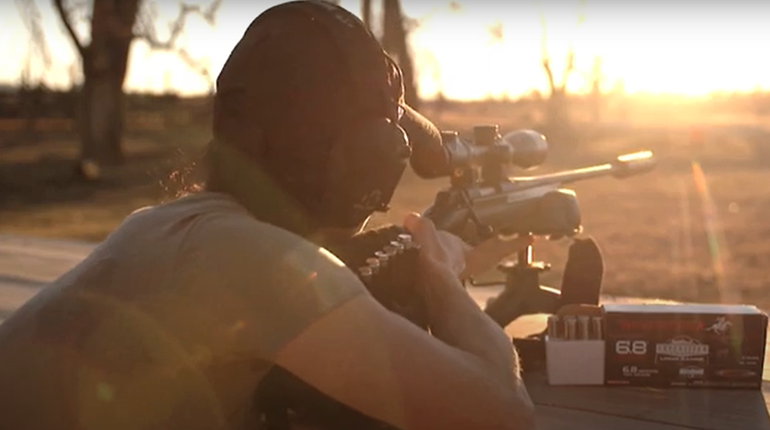
What is “Point Blank Range (PBR),” and what does it mean to you? Defined, point blank range is the range at which you don’t need to aim high or low to hit your aiming point. Maximum Point Blank Range (MPBR) is simply the farthest end of that distance.
A little “Ballistics 101” will help further our discussion. If you read Richard Mann’s excellent “Ballistics Made Simple” article (click here), you’ll learn that when you fire your rifle, the bullet rises and falls through your line of sight. That means that your crosshair could be right where you want them on your target, but the bullet could strike too high or low, depending on the distance.
If you know the ballistics of your rifle/bullet combination, you can adjust your aim up or down to compensate. This is harder than it sounds, because you also need to know the range to the target. At very close or very long distances, you have to aim high, and in between, you have to aim low. Only in the two places where the round crosses your line of sight will the shot be exactly on target. Without a good range finder, getting the range right is also chancy.
But fear not! If you know your weapon/ammo “point blank range,” you can aim at the center of your target—for this example, we’ll use the range of a whitetail deer’s “kill zone”—and be assured of an effective hit.
How does it work? The “kill zone” is where a bullet with sufficient energy, penetration and expansion should strike the game to ensure a quick, humane death. On whitetail deer a safe kill zone is about 6 inches tall, and includes the heart and lungs. (Neck shots, headshots and spine shots will also stop a deer quickly, but are for accomplished shooters—missed shots are more common because they require highly accurate shooting.)
So if your aiming point is at the center of the kill zone, and your bullet never passes 3 inches above or below your line of sight, you don’t have to adjust your aiming point. The good news news: Many hunting rifles will give you point blank range out to around 250 yards. But since no two bullets have the same trajectory, you have to calculate the zero range for your bullet. To do this, you need a ballistic app, program or spreadsheet or calculator, and the following information: caliber, weight in grains, muzzle velocity in feet per second (fps), and ballistic coefficient.
This information is available from the manufacturer on the Internet. You also need to know the vertical distance of your line of sight above the center of the bore. For iron sights, measure from the top of the front sight to the center of the bore, and for scopes it’s from the center of the front lens to the center of the bore.
I’m using my .450 Marlin, with the following data.
.450 Marlin
350 Grains
2100 FPS
BC.232
Scope height 3 inches
Note that my scope mount is a see-through, so I can use the iron sights under the scope if I’m close to the game.
This is from an Excel spreadsheet ballistic calculator. I filled in the required data like this:

The asterisks indicate data that will only apply for precision shooting. You can use averages with no problem. Leave the last two as zero.
I kept changing the zero range until I found one in which the highest trajectory was very close to 3 inches. Using that zero range yielded this description of the bullet’s path:

My point blank range with this rifle is 280 yards. The Excel table and chart both show the bullet rising to 6 inches between 110 and 120 yards, and falling to 6 inches below my line of sight between 280 and 290 yards. It means I can shoot the Marlin at a deer by aiming at the center of the kill zone anywhere out to 280 yards without worrying about aiming high or low.
Beyond 280 yards the bullet is dropping very fast. To be sure of a longer shot, I’d need an accurate rangefinder and a bullet drop table like the one above. (Where I hunt, which is mostly densely wooded forest of the East Coast, I would never take a shot that far.) If you were to look up the impact energy, type and shape of the projectile for my ammo, you would see that at 280 yards there is plenty of bullet for a knockdown kill.
Note that on the way up, my bullet crosses the line of sight at around 25 yards, and again at 230 yards. This information tells me I can do preliminary sighting-in and accuracy testing at 25 yards, and be on the paper at the longer ranges.
You should be able to calculate your point blank range with any commonly available ammunition, and with any ballistic program. Then make sure your bullet has plenty of killing power at your MPBR.
(For a look at a similar “take” on zeroing your hunting rifle, please go to the American Hunter and read Jeff Johnston’s “The 26-Yard Hunting Zero.”)
For more marksmanship tips, click here!







































